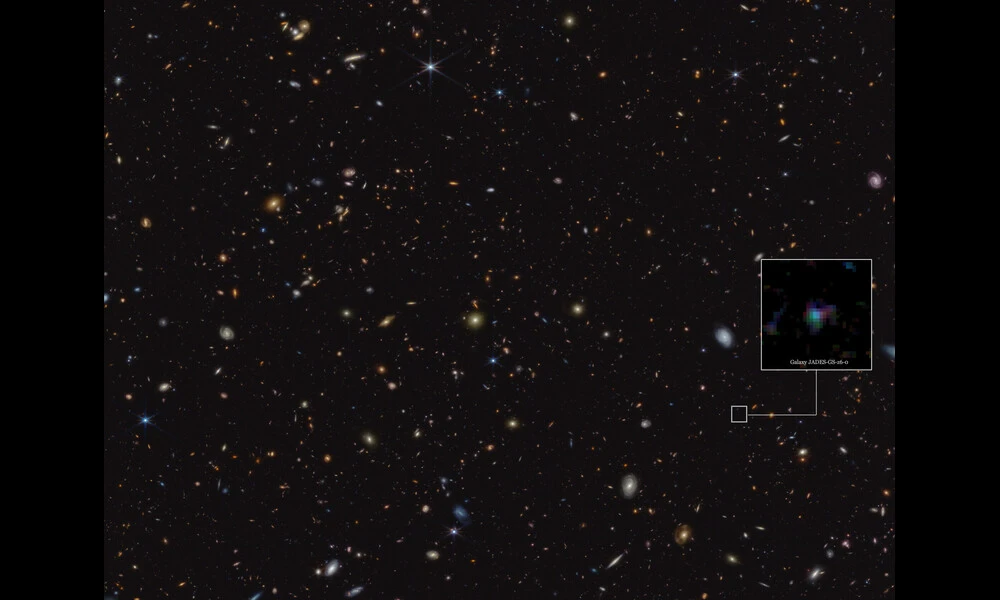New Research on Boson Stars
Published on Wed Aug 09 2023 Galaxy JADES-GS-z6 in the GOODS-S field: JADES (NIRCam image) | NASA's James Webb Space Telescope on Flickr
Galaxy JADES-GS-z6 in the GOODS-S field: JADES (NIRCam image) | NASA's James Webb Space Telescope on FlickrNew research suggests that self-interacting boson stars, which are compact objects made of complex scalar fields, can be generated using modified scalar potentials. These boson stars, which are potential candidates for dark matter, have properties that differ significantly from previous calculations. The study found three different categories of mass-radius relation for these boson stars, with some resembling selfbound stars, others neutron stars, and a third category being the well-known constant radius case. The most significant finding is that these boson stars can reach an extremely high level of compactness, exceeding previously calculated values. In fact, the maximal compactness can approach the limit of causality, which is a key characteristic of black holes. This suggests that these boson stars could potentially mimic black holes, with the photon ring located outside of the star's radius.
Boson stars have become of interest in the field of astrophysics due to their potential role in explaining phenomena related to dark matter. The study of these compact objects is important for understanding small-scale structure observations in cosmology. Additionally, self-interacting boson stars could be responsible for the gravitational wave sources detected by the LIGO-Virgo collaboration, particularly in the mass gap between black holes and neutron stars. By investigating the properties of boson stars with modified scalar potentials, scientists hope to gain insights into the nature of self-interacting dark matter. These findings could also aid in the detection and study of boson star mergers, as well as their distinguishability from black holes through radio observations of supermassive black holes.
The research involved deriving analytic expressions for the equations of state and stability mechanisms of boson stars with modified scalar potentials. The study investigated two stabilizing mechanisms: a mass term and a vacuum term in the scalar potential. Both mechanisms were found to have a considerable impact on the mass-radius curves and compactness of the boson stars. Notably, the maximal compactness of these stars was found to continuously increase with the power of the scalar potential. The highest compactness values were reached with the inclusion of a vacuum term in the scalar potential, even approaching the level of compactness required for the photon ring to be located outside the compact object.
In conclusion, this research demonstrates that modifying the scalar potential of boson stars can lead to drastic changes in their properties, particularly their compactness. The findings have important implications for the study of dark matter, self-interacting bosonic dark matter, and the detection of gravitational waves. By investigating different possibilities for the scalar potential, scientists can explore a wide range of boson star configurations and their potential astrophysical signatures. Further research in this field could provide valuable insights into the nature of dark matter and the behavior of compact objects in the universe.
Keep Reading
Q-Pilot: Revolutionizing Quantum Computing with Flying Ancillas and Field Programmable Qubit Arrays. A groundbreaking compiler that enhances efficiency and reduces errors in quantum circuits. #QuantumComputing #QubitArrays


